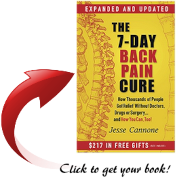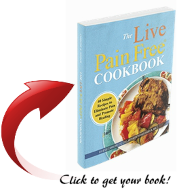I read a commentary on the Sunday paper a few weeks ago titled “That pain in your back? It’s really a pain in your brain”. And it motivated me to take a deeper dive into the mind-body connection of pain. And we did discuss in a past article, What is Pain Processing and Neuroinflammation?, that pain is a complex and multilayered experience that involves both the mind and body. And before we go any further, I want to let you know that I am not a medical professional and what follows is not medical advice.

Image by rawpixel.com on Freepik
While pain is often perceived as solely a physical sensation, emerging research highlights the intricate interplay between psychological factors and bodily sensations in the perception and management of pain. This article explores the mind-body connection in pain perception, shedding light on how our thoughts, emotions, and behaviors influence our experience of pain.
The Influence of the Mind on Pain Perception: Our thoughts and feelings can really influence how much pain we feel, shaping our experience of pain. When we are stressed, anxious, or feeling down, it can magnify the perception of how we feel about the pain and its duration. Stress and anxiety can make us more sensitive to pain, resulting in more discomfort. Also, negative emotions can make pain feel even worse by turning on certain parts of our brain that deal with emotions and pain. Besides emotions, how we think also matters. Things like paying attention to the pain, expecting it to hurt a lot, or thinking negatively about it can make it feel worse.
But there are ways to change how we think about pain to make it hurt less. For example, distracting ourselves, changing how we think about the pain, or practicing mindfulness may help us feel less pain. Such techniques have been shown to modify pain perception by altering the brain’s interpretation of nociceptive signals. Simply stated, it changes how our brain sees and interprets the signals from our body. So, by shifting our focus away from the pain or changing how we think about it, we can actually make it hurt less for us.
The Role of the Body in Pain Processing: Pain is not just about what happens in our body — it is also influenced by how our body and brain respond to it. Our nervous system, which includes both our brain and the network of nerves throughout our body, is key in how we experience pain. Specialized nerve cells called nociceptors detect damage in our tissues and send signals to our brain, triggering the perception of pain — which makes us feel pain.
But it is not just our nervous system. Our body’s internal processes, like changes in hormones, immune responses, and inflammation, can also affect how sensitive we are to pain. For example, when we are under a lot of stress for a long time, it can disrupt our body’s stress system, making us more sensitive to pain. On the flip side, interventions like relaxation techniques or ways to reduce stress can actually help our body produce its own pain-relieving chemicals, such as endogenous opioids and other pain-relieving neurotransmitters, which can dampen the perception of pain.
The Bidirectional Relationship between Mind and Body: Our mind and body work together in how we feel pain, each affecting the other. For example, if we are dealing with ongoing pain, it can make us feel down or anxious, which can then make the pain feel even worse. This could be due to how we cope with the pain, and how our body reacts to stress. It is referred to the interplay between the mind and body in pain perception, with psychological states influencing physiological processes and vice versa.
And there is good news! There are treatments that focus on both our mind and body to help ease pain and improve our quality of life. Techniques like cognitive-behavioral therapy (CBT), mindfulness-based stress reduction (MBSR), and biofeedback target both the mental and physical sides of pain to help us feel better and improve our overall well-being.

Understanding pain as a mind-body occurrence highlights the importance of adopting a holistic approach to pain management. By addressing the psychological, emotional, and physiological components of pain, individuals can develop effective coping strategies and enhance their overall well-being. Moreover, recognizing the bidirectional relationship between mind and body opens up new avenues for innovative treatments and interventions aimed at alleviating pain and improving quality of life.
To Your Success & Freedom,
Glenn Shimabukuro



